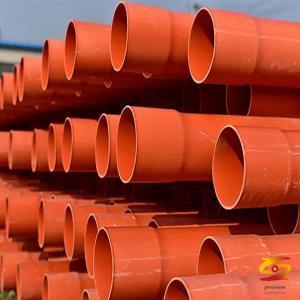PVC WINDOW DOOR FRAME PROFILE GENERAL FORMULA AND CHEMICAL FUNCTION INTRODUCTION
The general profile formula is as follows:PVC 100
Stabilizer 3-5
CPE 8-12
ACR 0.5-1.5
CaCO3 10-30
TiO2 4-8
The formulation of PVC plastic profiles is mainly composed of PVC resin and additives, which are divided into heat stabilizers, lubricants, agents, processing modifiers, impact modifiers, fillers, aging resistance agents, colorants Wait. Before designing the PVC formula, we should first understand the performance of PVC resin and various additives.
Raw materials and additives
PVC resin
The resin for producing PVC plastic profiles is polyvinyl chloride resin (PVC), which is polymerized by the polymerization of vinyl chloride monomer
Compound, the output is second only to PE, ranking second.
PVC resin can be divided into two types: loose type (XS) and compact type (Ⅺ) due to the different dispersants in polymerization. Loose particle size is 0.1-0.2mm, irregular surface, porous, cotton ball shape, easy to absorb plasticizer, compact particle size below 0.1mm, regular surface, solid, table tennis shape, not easy to absorb Plasticizers are currently used more loosely.
PVC can be divided into ordinary grade (toxic PVC) and sanitary grade ’(non-toxic PVC). Hygienic level requires vinyl chloride (VC) content lower than lOXl0-6, can be used in food and medicine. Synthetic process is different, PVC can be divided into suspension PVC and emulsion PVC. According to the national standard GB / T5761-93 "Suspension Method General Polyvinyl Chloride Resin Inspection Standard", the suspension method PVC is divided into PVC-SGl to PVC-SG8Jk resins, where the smaller the number, the greater the degree of polymerization and the more the molecular weight The greater the strength, the higher the strength, but the more difficult the melt flow and the more difficult the processing. When making specific choices, when making soft products, generally use PVC-SGl, PVC-SG2, PVC-SG3 type, need to add a large amount of plasticizer. For example, polyvinyl chloride film uses SG-2 resin, adding 50 ~ 80 parts of plasticizer. When processing hard products, generally no or little plasticizer is added, so PVC-SG4, VC-SG5,
PVC-SG6, PVC-SG7, PVC-SG8 type. For example, PVC hard pipes use SG-4 resin, plastic door and window profiles use SG-5 resin, rigid transparent sheets use SG-6 resin, and rigid foam profiles use SG-7 and SG-8 resin. The emulsion method PVC paste is mainly used for artificial leather, wallpaper and floor leather and plastic dipped products. Some PVC resins manufactured by PVC resin manufacturers are classified according to the degree of polymerization (the degree of polymerization is the number of unit links, and the degree of polymerization is multiplied by the molecular weight of the link equal to the molecular weight of the polymer). SK-700; SK-800; SK-1000; SK-1100; SK-1200 and so on. The corresponding degree of polymerization of its SG-5 resin is 1000-1100. For physical and chemical properties of PVC resin, see Chapter 4.
PVC powder is a white powder with a density between 1.35-1.45g / cm3 and an apparent density between 0.4-0.5g / cm3. Depending on the content of the plasticizer, it can be soft and hard products. Generally, the plasticizer content is 0-5 parts for hard products, 5-25 parts for semi-hard products, and more than 25 parts for soft products.
PVC is a non-crystalline, polar polymer with high softening temperature and melting temperature. Pure PVC generally needs to be plasticized at 160-210 ~ C. Due to the polar bonds between macromolecules, PVC Shows hard and brittle performance. Moreover, the chlorine-containing groups in PVC molecules, when the temperature reaches 120 ~ C, pure PVC will begin to de-HCl reaction, which will lead to thermal degradation of PVC. Therefore, various additives must be added during processing to modify and impact modify PVC, so that it can be processed into a useful product.
PVC resin is mainly used to produce all kinds of films (such as daily printing films, industrial packaging films, agricultural greenhouse films and heat shrinkable films, etc.), all kinds of boards and sheets (their sheets can be used for plastic products), and all kinds of pipes (Such as non-toxic water supply pipes, building threading pipes, transparent hoses, etc.), various types of profiles (such as doors, windows, decorative panels), hollow blow molding (for cosmetics and beverages), cables, various injection molded products and artificial leather , Floor leather, slush plastic toys, etc. The physical and chemical properties of various PVC stabilizers are shown in Table 1 (To the next page)
stabilizer
Pure PVC resin is extremely sensitive to heat. When the heating temperature reaches 90Y: above, a slight thermal decomposition reaction will occur. When the temperature rises to 120C, the decomposition reaction will increase. At 150C, 10 minutes, the PVC resin will be white Gradually changed to yellow-red-brown-black. The decomposition process of PVC resin is due to a series of chain reactions caused by the de-HCL reaction, which finally leads to the breakage of the macromolecular chain. The thermal stability mechanism to prevent the thermal decomposition of PVC is achieved through the following aspects.
Prevents the catalytic degradation of HCl by capturing the HCl produced by the thermal decomposition of PVC.
Lead salts mainly act according to this mechanism. In addition, there are metal soaps, organic tins, phosphites and epoxys.
· Replace the active allyl chloride atom. Metal soaps, phosphites and organic tins can act according to this mechanism.
· Reaction with free radicals to stop the reaction of free radicals. Organotin and phosphite act according to this mechanism.
· Addition to conjugated double bonds to suppress the growth of conjugated chains.
Organic tins and epoxys act according to this mechanism.
· Decompose peroxide and reduce the number of free radicals. Organotin and phosphite act according to this mechanism.
· Passivation of metal ions with catalytic HCl removal.
The same stabilizer can achieve the purpose of thermal stabilization according to several different mechanisms.
If you want to know more about it please do not hesitate to
contact me. WhatsApp:+86-15966835076.









